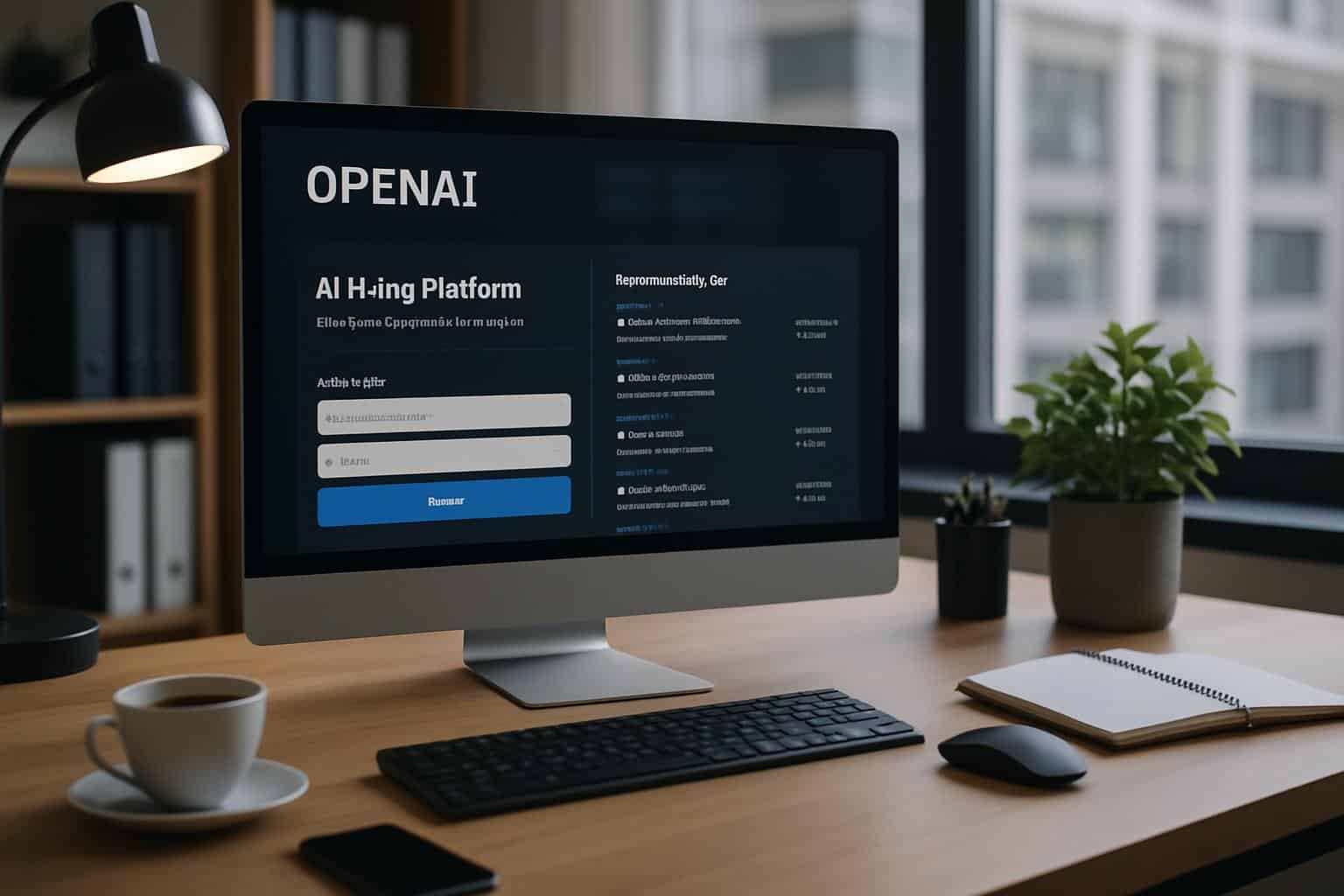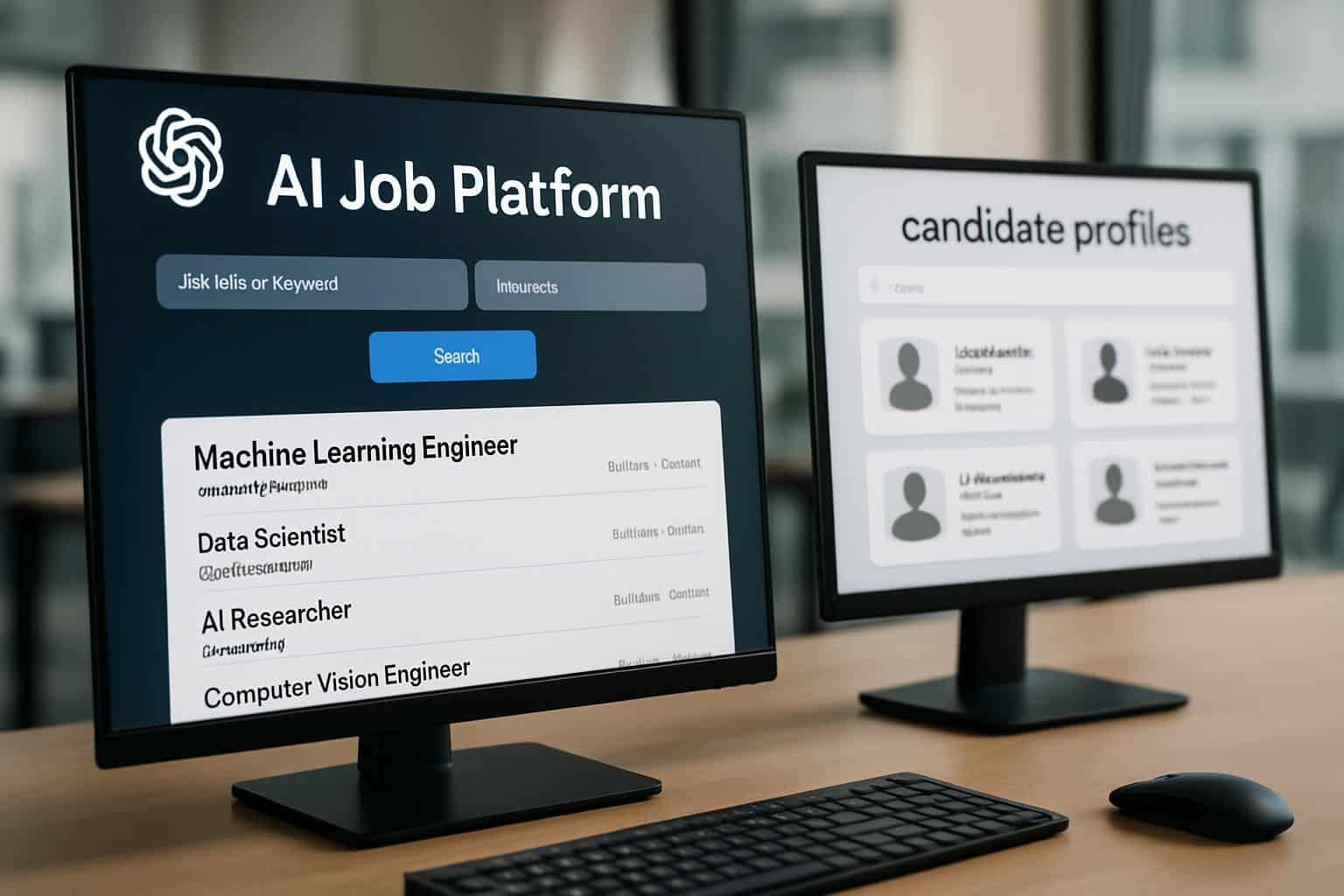OpenAI is jumping into the labour market through an AI-powered hiring platform designed to better connect hiring companies with talent in a more efficient and accurate manner than traditional job websites. It also puts the ChatGPT creator in competition with LinkedIn’s vast network of professionals and suggests a wider move by OpenAI to develop applications that run on top of its core models.
OpenAI’s applications chief Fidji Simo framed the service as a tool to “find the perfect matches between what companies are looking for and workers can offer,” and said it would include a special track for small businesses and local governments looking for AI-savvy talent. CEO Sam Altman has also signaled that Simo will be in charge of more than just the flagship chatbot, hinting at a broader portfolio of consumer and enterprise apps.

What OpenAI is building
The recruiting company is more than just a list of available positions. Count on those being powered by a model-driven engine that parses job descriptions into skill graphs, screens portfolios and project samples, and performs conversational pre-interviews that surface candidates who are qualified. For recruiters, embedded assistants could also write up postings, score candidates according to role-specific competencies, and suggest calibrated assessments — all capabilities created only in the past year now that generative AI is maturing.
OpenAI is also binding the marketplace to its pipeline of education. With OpenAI Academy, the company intends to extend certification that declares “AI fluency” across job types from frontline retail to data science. A pilot for the certifications is scheduled for late 2025; OpenAI says it will seek to credential the skills of 10 million Americans by 2030. Walmart, one of the world’s largest private employers, is helping develop the program, a significant endorsement of microcredentials that are designed to align with the needs of employers.
A direct shot at the core of LinkedIn
With that network now reaching beyond 1 billion members — according to Microsoft, which owns LinkedIn — it has spent the past year threading intelligent, generative AI throughout job matching, recruiter search and candidate summaries. It is the beneficiary of substantial network effects around rich profiles, recruiter workflow, and ecosystem of ATS (applicant tracking system) integrations that make it a multi-sided marketplace with high switching costs.
OpenAI’s entry is particularly notable because of its relations with LinkedIn’s owner. Microsoft is OpenAI’s biggest financial backer and LinkedIn’s co-founder, Reid Hoffman, was one of OpenAI’s early backers. That sets the table for a curious “coopetition”: OpenAI will have to differentiate without damaging the value of a key partner’s asset. The most plausible direction is depth of skills inference and assessment — areas where big language models can interpret messy real-world experience into standard signals that recruiters can trust.
Certifications as a new hiring signal
AI-certified could be the wedge on the platform. Conventional résumés make for bad proxies of ability with fast-evolving tools, and employers are coming to expect evidence that candidates can automate workflows, write good prompts and evaluate model outputs. If OpenAI’s certifications can accurately assess task-level proficiency — in other words, that you can audit AI-made analyses or deploy an assistant safely into a customer workflow — they could work like cloud certifications did for infrastructure roles, expediting hiring and upskilling.

The wager is part of a wider policy push. OpenAI said the programs are in line with a federal effort to increase AI literacy, and the company acknowledges the labor-market risks. Dario Amodei, CEO of Anthropic, is another who has warned that AI might annul one half of entry-level white-collar jobs by 2030. OpenAI’s position is pragmatic: disruption is inevitable, so make the transition less chaotic by assisting workers in documenting and signaling new skills.
Trust, bias and compliance will determine adoption
Employment is one of the most regulated applications of AI. The U.S. Equal Employment Opportunity Commission has provided guidance on algorithmic selection, and the E.U.’s AI Act places many employment AI systems in the high-risk category. That means transparency around model inputs, bias testing and human oversight must be baked in from day one. Employers will also inquire about how candidate data is treated as proprietary, and whether it trains future models— a major trust determinant within enterprise AI technology disbursements.
On OpenAI’s side: Model quality; Its challenge: Governance. To win recruiters, the platform needs to include audit trails (why a candidate was ranked), guardrails to prevent proxy discrimination, and seamless export into incumbent stacks like Workday, Greenhouse, and SAP SuccessFactors. Without integration, even the most intelligent matching engine is simply another tool that teams will work around.
Why this move is important for OpenAI
Entering hiring is a piece of a larger applications strategy: turning strong AI capability into habit-forming, revenue-generating products. A jobs marketplace could form a two-sided network where both supply (talent) and demand (employers) interface with OpenAI services on a daily basis, which could encourage the use of its models, educational courses, and future productivity products. And the small-business and public-sector track is no slouch either, given these sectors often don’t have AI talent in-house and are under pressure to get going fast.
What to watch next
Here are some key questions that will help determine whether this can ding LinkedIn’s lead: How challenging and widely respected will OpenAI’s certificates be? Will the matching system beat out old-school recruiter tools in terms of quality of hire and time-to-fill? Which guardrails and transparency features will regulators and DEI leaders find acceptable? And will Microsoft package the offering as a complement for LinkedIn or as a separate channel centered on AI related roles and skills?
If OpenAI can demonstrate that AI-native assessments lower hiring friction — and do so fairly — it could reset expectations for how candidates express skills and how employers staff teams. If it hasn’t, it will find out what many HR tech startups have: When it comes to hiring, the algorithm is only half the product; trust and workflow fit are the rest.

